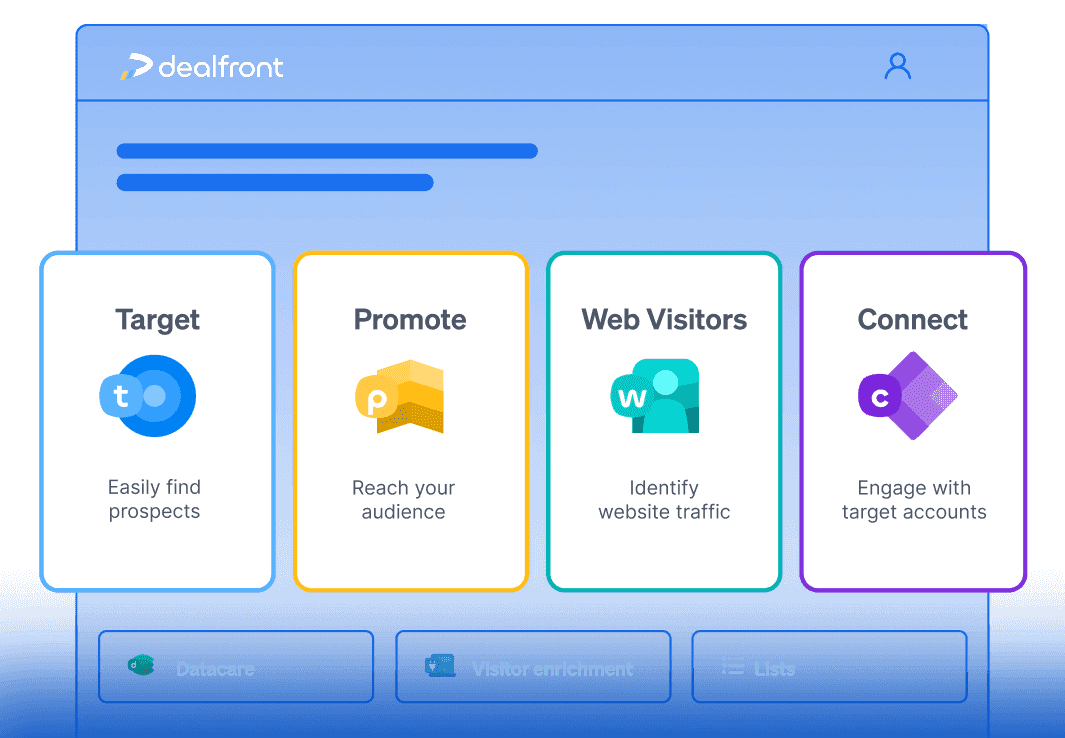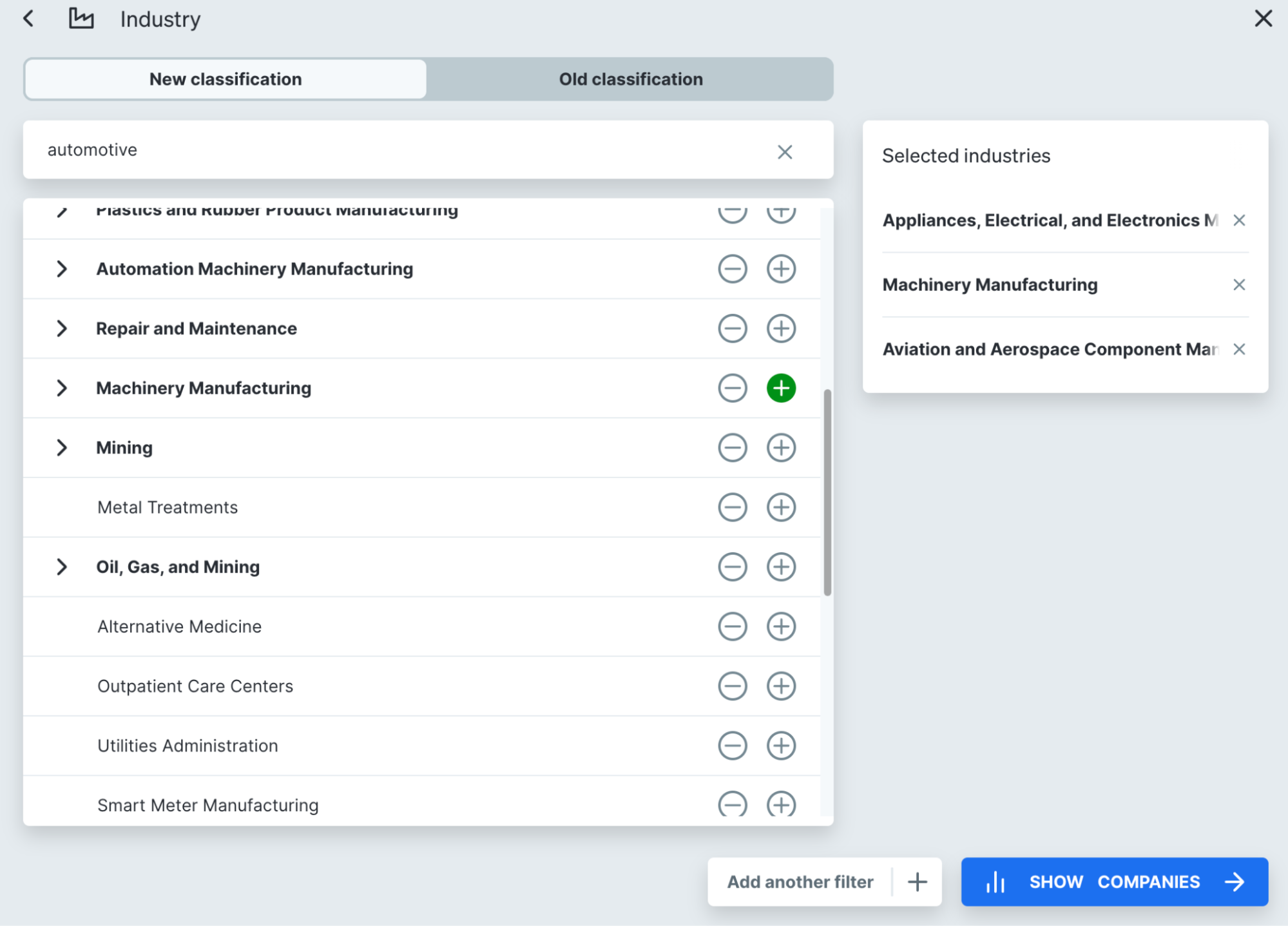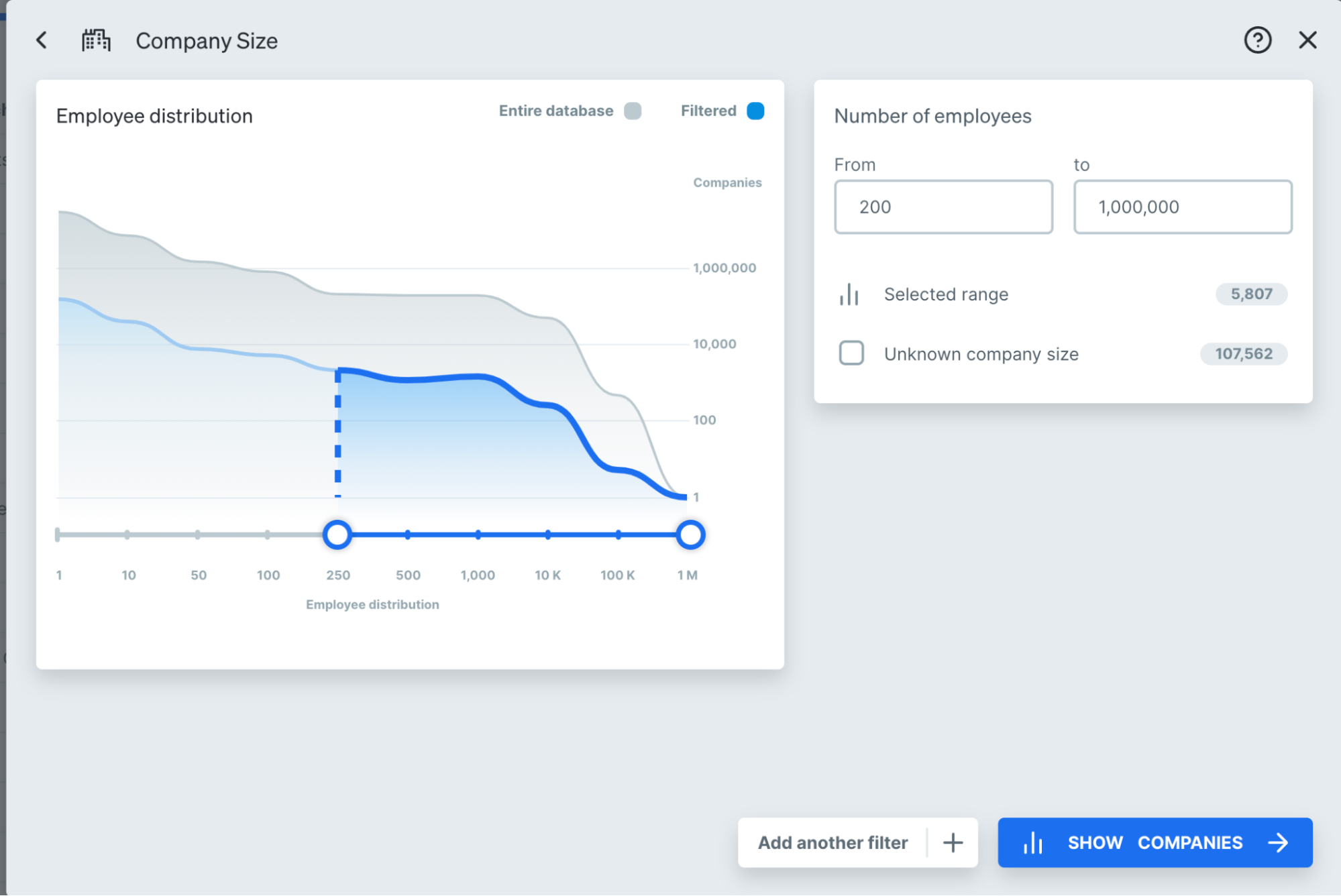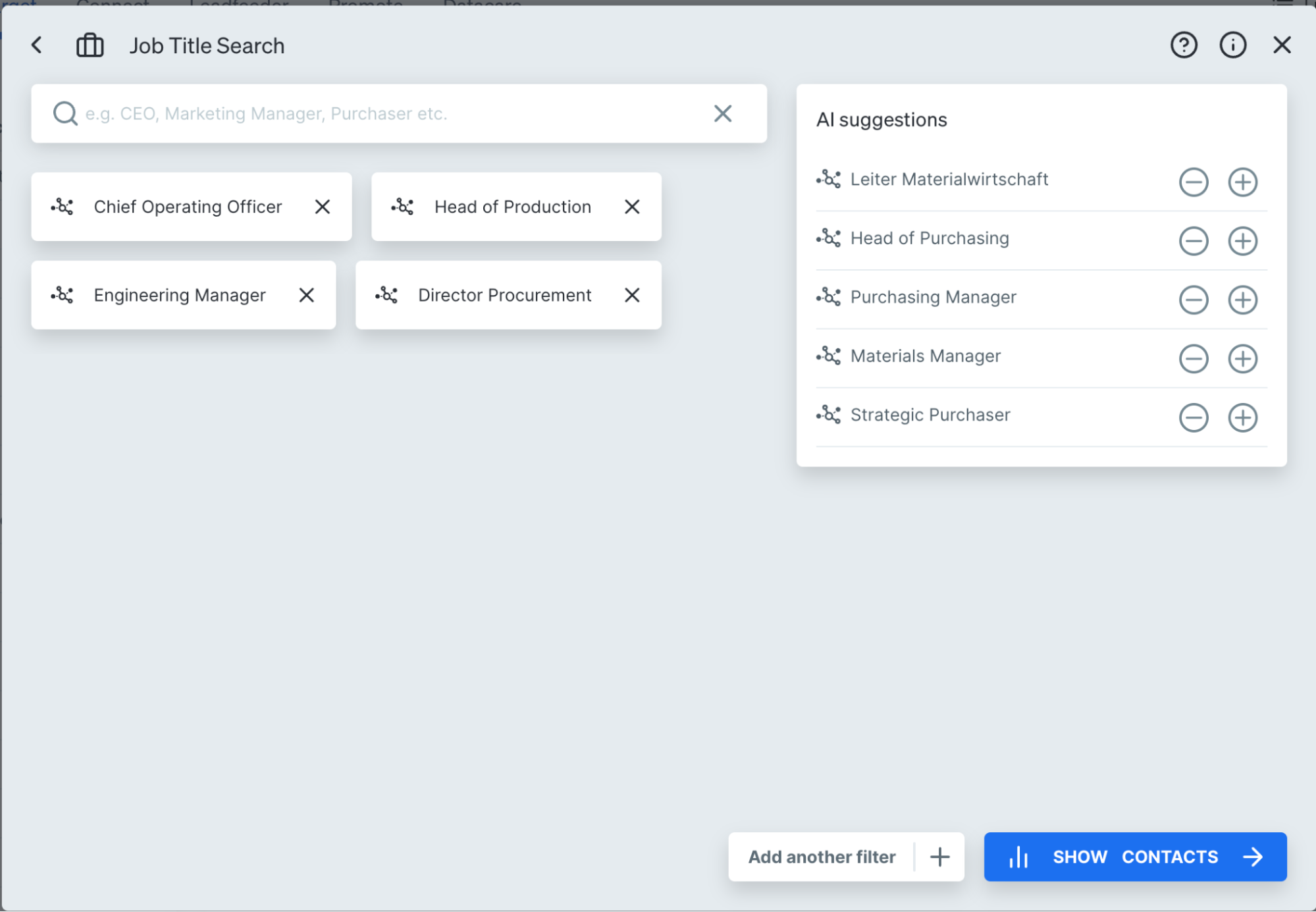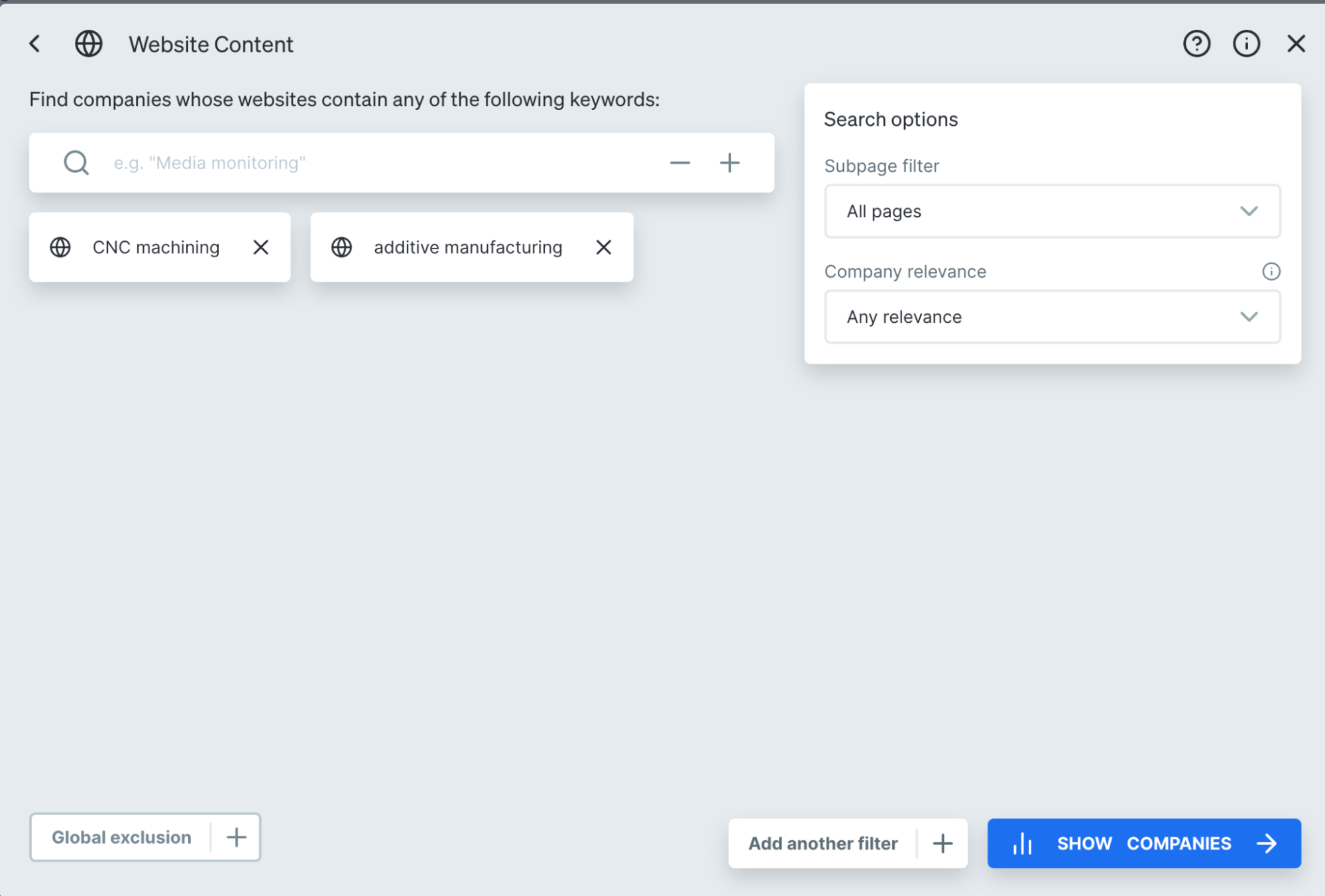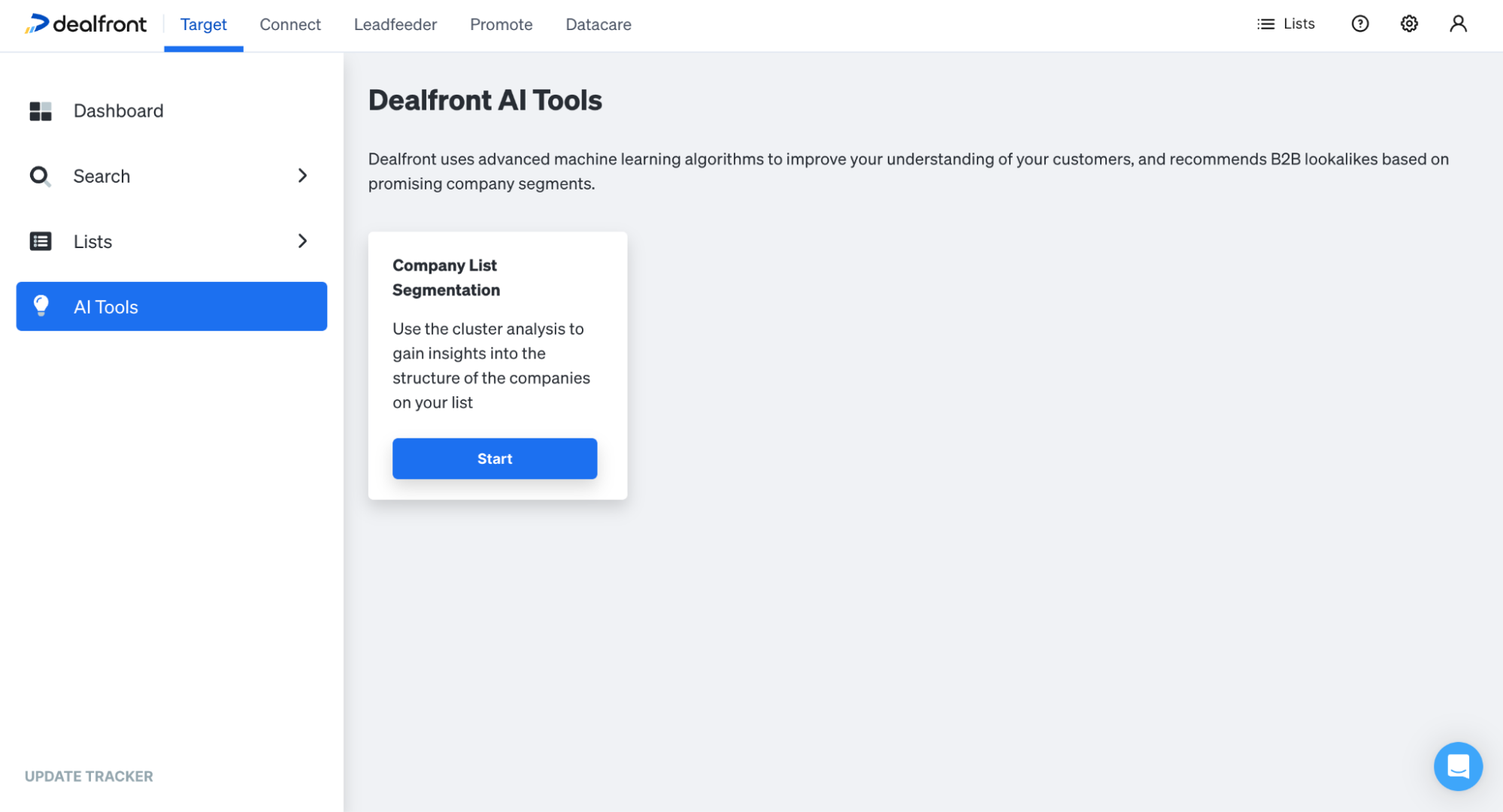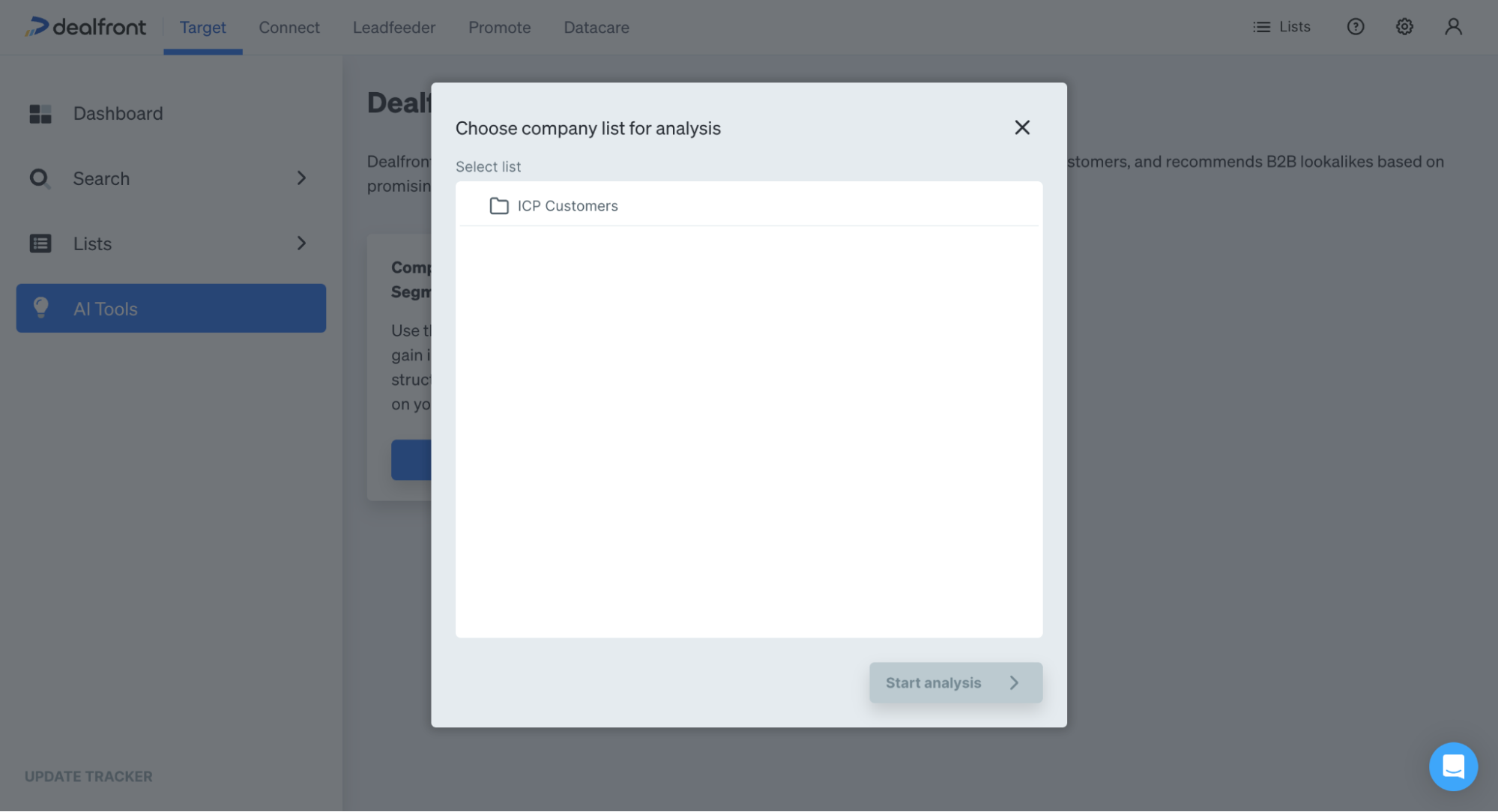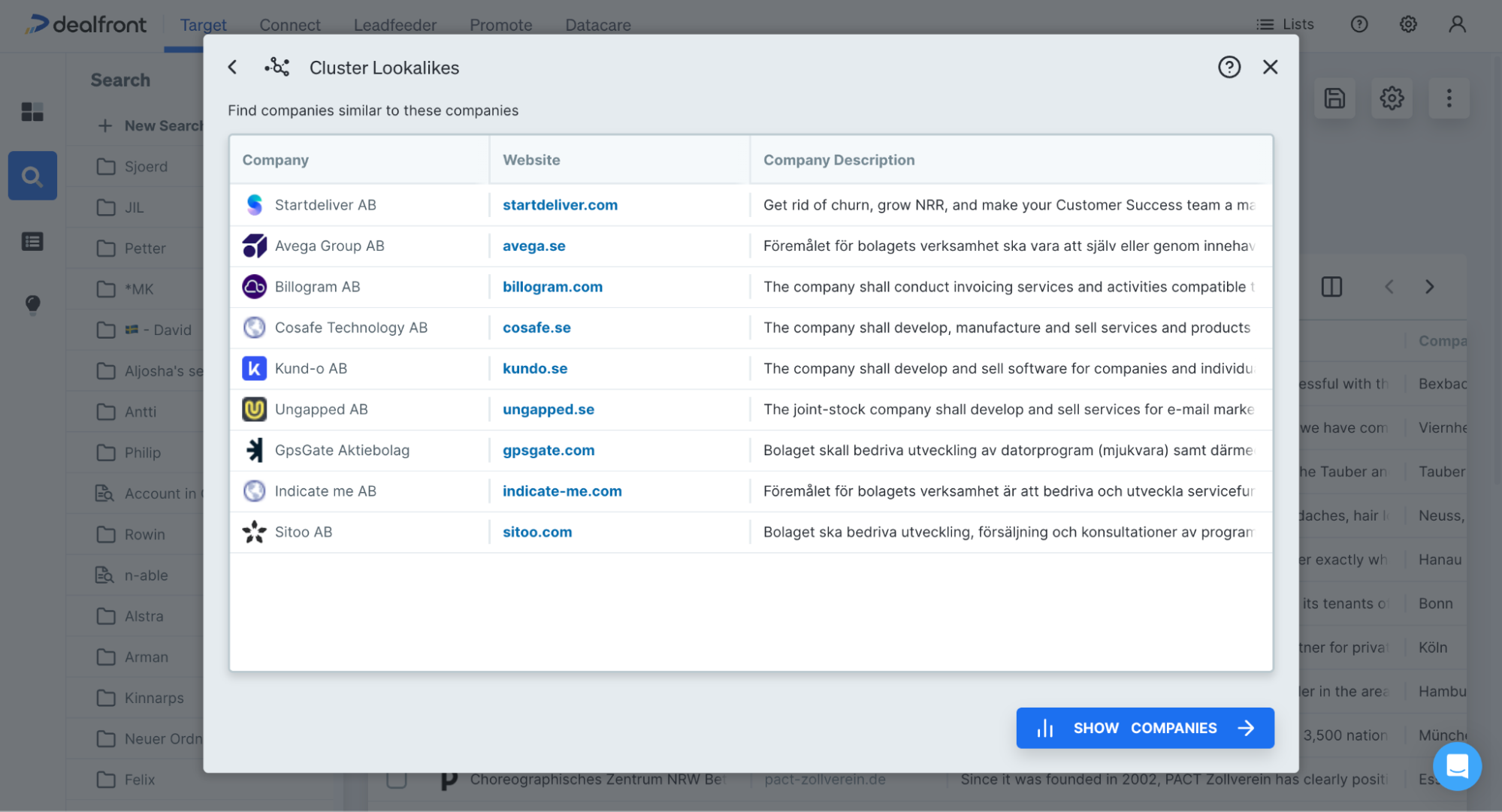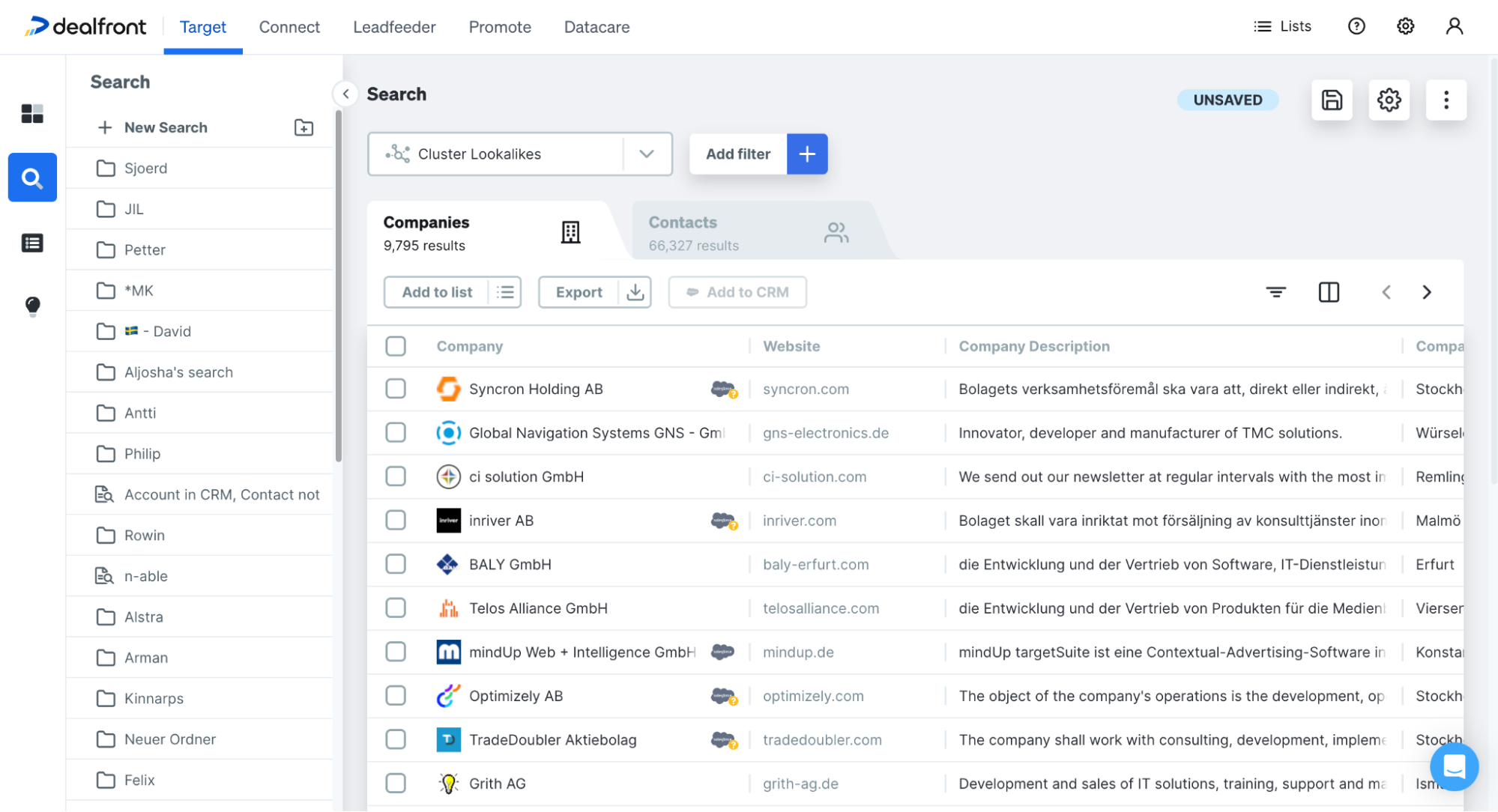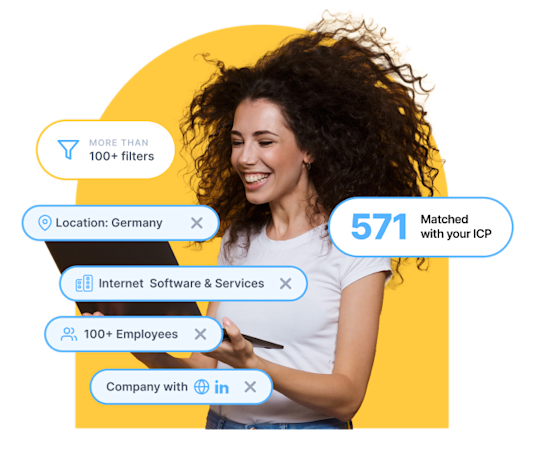How to Define Your ICP and Find Perfect-Fit Companies To Target
This play is also available in German.
Expected results
More Targeted Marketing and Sales Efforts
Improved Lead Quality
Increased Efficiency and Resource Allocation

Your Ideal Customer Profile (ICP) is a foundational element of a successful go-to-market strategy. To thrive as a business, you must ensure you are connecting with the right customers. This is where defining your ICP becomes essential. Your ICP is not just a vague description of who might buy from you; it's a detailed, data-driven representation of your most valuable customers which is essential to use when working out your Total Addressable Market (TAM). When crafted thoughtfully, your ICP will guide your marketing, sales, and product development efforts, so that every decision you make is geared towards attracting and retaining the customers that matter most to your business.
This play is designed to walk you through the process of defining your ICP and identifying companies that perfectly match this profile. Whether you're a startup looking to gain traction, or an established business aiming to refine your approach, understanding your ICP will empower you to target your resources effectively, streamline your operations, and ultimately drive sustainable growth.
Define your Ideal Customer Profile (ICP)
Identify key characteristics
Defining your ICP is key to a successful customer acquisition strategy. An ICP is a detailed account of the type of customer that derives the most value from your product or service, and in turn, brings the most value to your business. By identifying the key characteristics of your ideal customers, you can focus your marketing and sales efforts on those who are most likely to become loyal, long-term clients.
To start, it’s important to list the attributes that best define your ideal customers. Consider the following factors to ensure you’re building enough detail into your ICP:
What industry does your ideal customer operate in?
What is their company size?
What is their annual revenue?
Where do they operate? What is their geographic location?
The process of defining your ICP should be data-driven. Start by analyzing your existing customer base to identify your most successful relationships. Look at your sales history, explore your customer data, and pull insights from your CRM to create detailed profiles of these top-performing customers. Pay attention to patterns; what do your best customers have in common? Understanding this will enable you to create a clear and specific ICP.
The outcome of this exercise should be a well-defined ICP that will guide all of your subsequent targeting and outreach efforts. With a detailed ICP to hand, your marketing team can craft more personalized and effective campaigns, your sales team can focus on prospects that are more likely to convert, and your product team can tailor offerings to meet the specific needs of your ideal customers.
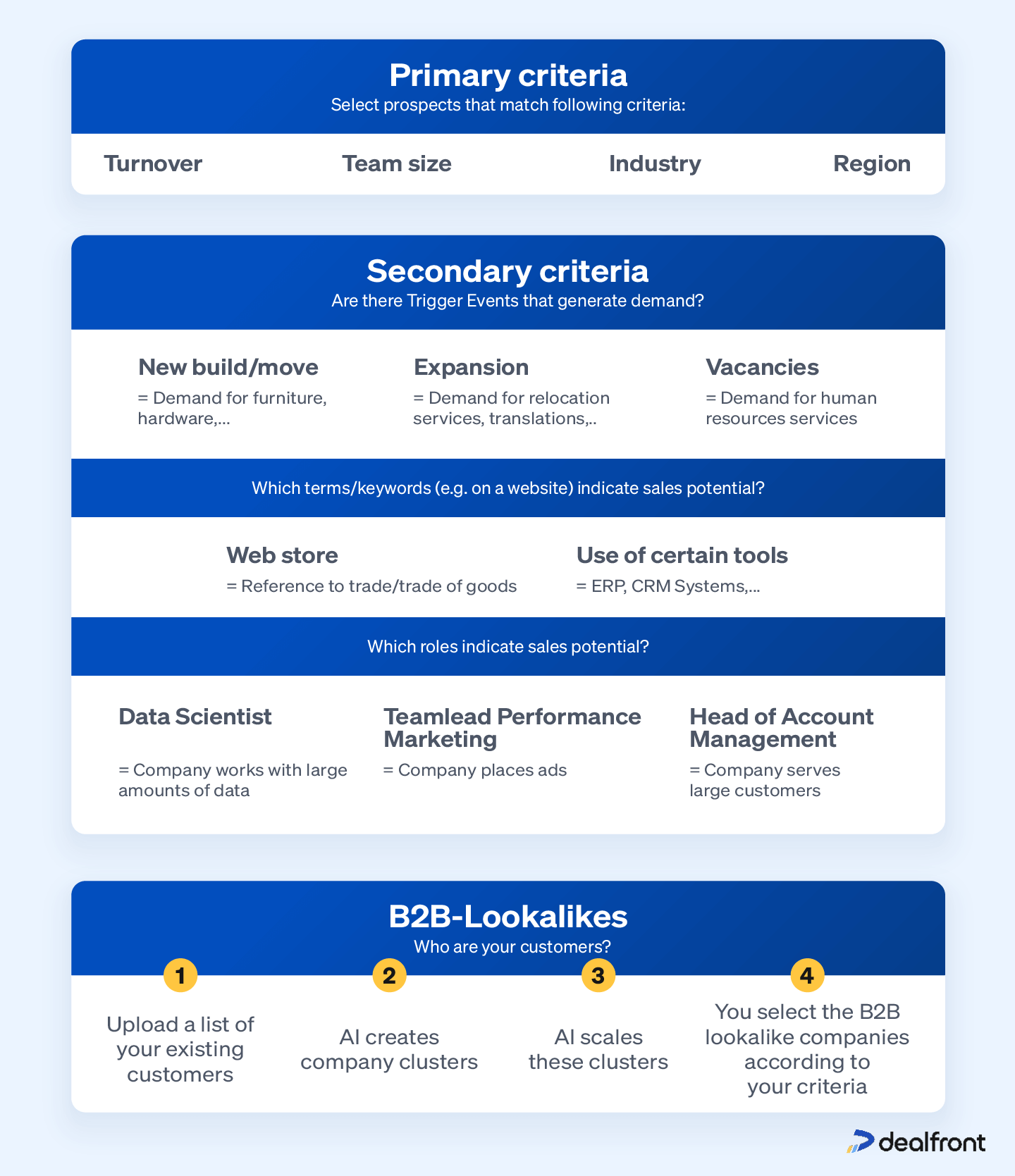
Segment the market
Once you've defined your ICP, the next step is to segment the market. Market segmentation means dividing your wider ICP into smaller, more specific groups. This process allows you to refine your approach, ensuring that your marketing and sales efforts are laser-focused on the most promising opportunities.
You can narrow your ICP focus further by considering the following:
Are they looking to expand their outreach? An expansion can create demand for relocation services or translator solutions.
Have they, or are they, expanding their headcount? Open vacancies can create demand for Human Resources services or HRtech products.
What tools are in their techstack? Their existing techstack might dictate future integrations and partnerships.
Are they in a new office space? This can indicate a need for new hardware, furniture and office equipment.
Consider what roles the company is advertising. For example, if a company is hiring or has existing employees in data science, then you know that company will be working with large amounts of data.
Look out for keywords on the target company’s website. For example, an ISO certification in accordance with ISO 26000 could indicate that sustainability and acting in a socially responsible way is important to a company.
It is important to identify the key attributes that distinguish different segments within your ICP. For example, companies in the technology sector may have vastly different needs and buying behaviors compared to those in healthcare or finance. Similarly, the challenges faced by a small startup will differ from those of a large enterprise, even if both fall within your ICP. By understanding these nuances, you can tailor your messaging, product offerings, and engagement strategies to resonate more deeply with each segment.
Using tools such as CRM systems, market segmentation platforms, and data analytics can greatly enhance this process. These tools enable you to analyze and categorize your customer data, revealing patterns and clusters that might not be immediately apparent. By using these insights, you can create a segmented market list that aligns closely with your ICP criteria.
By focusing on well-defined segments that align with your ICP, you ensure that your resources are directed towards the customers most likely to convert, engage, and provide long-term value to your business.
Validate the ICP
Once you've outlined your ICP, your next step is to validate it to ensure it truly represents your best market opportunities. Validation means comparing your defined ICP against your most successful customers - those who have found real value in your product or service and have contributed significantly to your business.
To do this, you’ll need to conduct surveys and interviews with your top-performing customers. Ask them about their challenges, needs, and reasons for choosing your solution. This direct feedback will help you understand if your ICP aligns with the real-world experiences of those who benefit most from what you offer.
You can also review customer success stories and case studies. Look for patterns and common traits among your best customers, such as company size, industry, or specific needs your product meets. These insights will help you refine your ICP to better reflect the customers who are most likely to succeed with your solution.
By validating your ICP through these methods, you’ll ensure you have a reliable and accurate ICP that you can confidently use to target and attract the right customers.
Example: Ideal Customer Profile (ICP) for a manufacturing company
1. Company Demographics:
Industry: Machinery Manufacturing, Aerospace, Electronics
Company Size: Mid-to-large enterprises with 200 to 1,000+ employees.
Annual Revenue: € 50 million to € 500 million.
Geographical Location: DACH
2. Operational Characteristics:
Technology Stack: Companies using advanced manufacturing technologies such as CNC machining or additive manufacturing.
Sustainability Initiatives: Companies focused on reducing carbon footprints and enhancing sustainability through energy-efficient machinery and eco-friendly manufacturing processes.
3. Decision-Maker Profile:
Roles: Chief Operations Officer (COO), Head of Production, Engineering Managers, and Procurement Directors.
Influencers: Maintenance Managers, IT Directors, and Sustainability Officers.
Decision-Making Criteria: Focus on total cost of ownership, return on investment, product reliability, and after-sales support.
4. Pain Points:
Operational Efficiency: Struggles with reducing production costs while maintaining or improving product quality.
Downtime and Maintenance: Frequent machinery breakdowns or inefficiencies leading to costly downtime.
Technology Integration: Challenges in integrating new technologies with existing legacy systems.
Regulatory Compliance: Pressure to meet strict industry regulations, particularly in safety and environmental standards.
5. Buying Behavior:
Sales Cycle: Typically long, involving multiple stakeholders and detailed evaluation processes. The cycle may range from 6 months to 18 months.
Preferred Sales Channels: Direct sales supported by technical consultations and on-site demonstrations. Partnerships with trusted suppliers and long-term vendor relationships are common.
Content Consumption: Decision-makers and influencers engage with whitepapers, case studies, and industry reports. They attend industry trade shows and webinars to stay informed about the latest advancements in manufacturing technology.
6. Strategic Goals:
Efficiency Improvements: Aiming to improve production efficiency by 10-20% over the next 2 years through better machinery and process optimization.
Innovation: Investing in cutting-edge technologies to maintain competitive advantage and meet future industry demands.
Sustainability: Committed to achieving sustainability goals, such as reducing energy consumption by 15% and cutting waste by 25% within the next 5 years.
Market Expansion: Expanding into new markets or product lines that require adaptable and scalable manufacturing solutions.
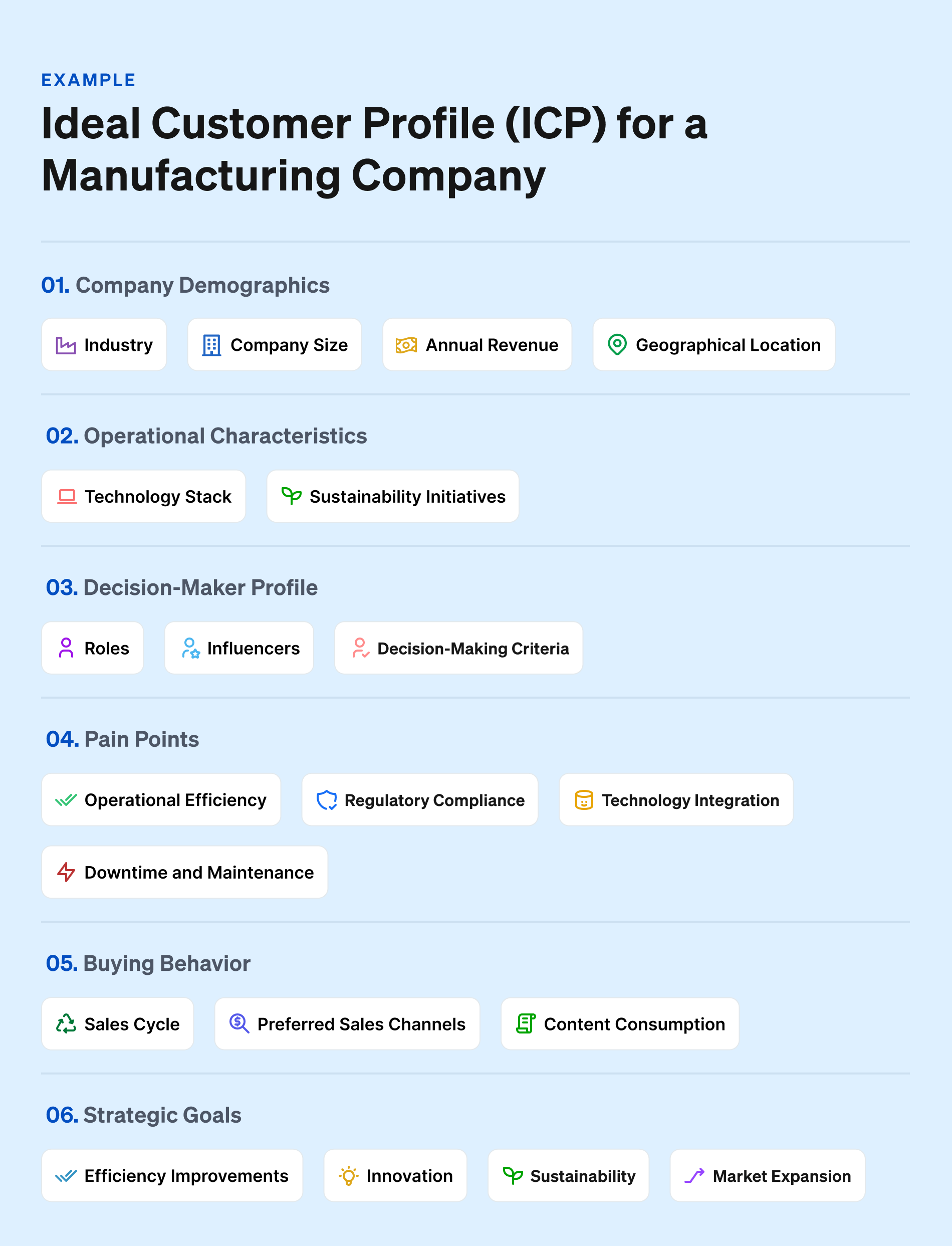
Identify companies matching your ICP
Once you’ve clearly defined your ICP, the next step is to find companies that fit this profile. This is where Dealfront platform comes in. Using Dealfront Target, you can easily search for and identify businesses that align with your ICP.
Dealfront Target is easy to use and is designed to save you time, ensuring that your efforts are focused on the most promising leads. Using this method, you can expect a targeted list of companies that are highly likely to benefit from your product or service. Using this list, you can then move on to monitoring these companies and planning your outreach strategy, confident that you’re engaging with the right potential customers.
There are two effective ways to find companies that match your ICP.
1. Search with Dealfront Target
Start by inputting the key characteristics of your ICP, as determined in the earlier steps, into Target. Use the filters to ensure you have narrowed down to your most specific ICP.
For example, under “Regional Filters”, select “Countries and Regions”, then you might select the DACH countries. Next, select “Add another filter”.
Then you would add another filter, by simply selecting “Industries”, then “Industry”. You could then select or type in an industry such as “Machinery Manufacturing”, “Aerospace”, and “Electronics”. Then click, “Add another filter”.
![Search in Dealfront Target for companies within a certain industry]()
To narrow down by headcount size, first select “Company Filters”, then “Company Size”. Then you would input the size of companies that you are interested in by manually filling out the boxes underneath “from” and “to” before clicking “Show Companies”. For example, from “200” to “1,000,000”.
![Define company size in Dealfront Target]()
To also filter by annual revenue, first select “Financial Figures”, then “Revenue”. Now you can filter down the companies to display only those with an annual revenue that is suitable for your ICP. Manually fill out the boxes under “Revenue from” and “Revenue to” with figures such as “50,000,000” and “500,000,000”, then click once more on “Add another filter”.
![How to filter by annual revenue in Dealfront Target]()
Next we can filter down to see the contacts we want. Add another filter and click on “Contact Filters” then “Job Title Search”, which will allow you to filter down to see only companies that have the right decision makers. Here, try adding “Chief Operating Officer”, “Head of Production”, “Engineering Manager, and “ Director Procurement”, then click “Add another filter”.
![How to filter by job title in Dealfront Target]()
Now add another filter, select “Company Filters” and then “Website Content” which will enable you to find companies based on keywords on their website. For this example we are interested in companies that are using advanced manufacturing technologies, so you can add “CNC machining” and “additive manufacturing” as keywords. Click “Show companies”.
![How to filter by website content in Dealfront Target]()
You will now see a curated list of companies that match these criteria.
Now you can select the companies in your results and either export them to your CRM, save them to a list, or explore the results further to learn more about the companies generated in your results.
2. Build a list of ICP companies with Dealfront AI Tools
Take a list of your best customers and import them into Target and save them with the name “ICP Customers”
Navigate to Target and to the side tab, “AI Tools”. Select “Company List Segmentation“ and click on the blue “Start” button.
![Dealfront AI tool]()
Choose the company list you have saved as “ICP Customers” for analysis.
![Select company list of ICP to analyize with Dealfront AI]()
Select a cluster, define the similarity of companies in a cluster and click “Show similar companies”.
![Cluster analysis in Dealfront: Show similar companies matching your ICP]()
You will now see an overview of the companies within the cluster. This provides the basis for the AI tool to then find similar companies that will be of interest to you.
![overview of the companies within the cluster]()
You will now see an overview of all the companies that have similar characteristics to your best customers. Make sure you save these companies to a List by selecting the results and clicking 'Add to list’.
![overview of all the companies that have similar characteristics to your best customers]()
What to do next?
Once you have defined your ICP and identified companies that match, the next steps are essential for turning these insights into actionable business growth. Here’s a breakdown of what you should do next:
1. Research and qualify leads
Deep dive into company profiles - start by gathering more detailed information about the companies on your list. Understand their pain points and business challenges, work out who are their decision-makers, and then make sure you understand how your solution can address their specific needs.
Prioritize leads - now you can prioritize the most promising leads for your team by focusing on a company’s intent. For example, as soon as an ICP company visits your website, you can reach out to them, knowing that there is relevance behind your approach.
2. Develop tailored outreach strategies
Personalize communication - make sure your messages speak directly to the needs and challenges of each company. Use the insights from your research to make your outreach relevant and compelling enough for that company to pay attention to what you’re saying.
Multi-channel engagement - use multiple channels, such as email, LinkedIn, phone calls, and even direct mail, to reach out to your potential customers. Consistent, well-coordinated engagement increases the chances of getting noticed and starting meaningful conversations.
3. Engage and nurture relationships
Build relationships - once you’ve made first contact, the next step is to focus on creating value in each of your interactions. Share insights, offer solutions, and establish yourself as a trusted partner rather than just a vendor. Building relationships is key to long-term and on-going success.
Nurture leads - remember, not all leads will be ready to convert immediately. Develop a nurturing strategy that keeps your brand top-of-mind while providing ongoing value through content, updates, and check-ins.
4. Measure and refine your approach
Track engagement and results - monitor how companies respond to your outreach efforts. This data can be invaluable when it comes to assessing what’s working and where adjustments are needed.
Refine your ICP and targeting - as you gather more data, it will be important to come back to this play and repeat the process to further refine your ICP, using the additional insights you have gathered. This ensures that your targeting becomes increasingly accurate over time, leading to better results.
By following these steps, you’ll turn the companies that match your ICP into loyal customers, driving growth and maximizing the return on your marketing and sales efforts.
Expected results
Defining your ICP and finding companies that match it can lead to several significant outcomes that positively impact your business. Primarily, you can expect higher conversion rates as you engage with more qualified leads having identified those who genuinely need and value your product or service. This focus on high-potential prospects also streamlines the sales process, making it more efficient and resulting in quicker deal closures.
As a result, your marketing and sales efforts will be more focused, meaning that resources are also allocated effectively. This targeted approach not only improves the return on investment but also frees up time and energy for your sales team to spend on the most promising opportunities. As you work with companies that closely align with your ICP, you'll also build stronger customer relationships. These companies are more likely to benefit from your offerings, leading to higher satisfaction and loyalty.
With happier customers, you can also expect an increase in customer lifetime value, as happy customers are more likely to stay with you, purchase additional products, and even advocate for your brand. With a clear and well-defined ICP, you can even replicate your success across different markets, making your growth more scalable and predictable. This strategic focus allows you to enter new markets or develop products that align with your ideal customers’ needs.
The process of defining your ICP and identifying matching companies enhances data-driven decision-making across your organization. The insights gained can inform everything from product development to customer service, leading to continuous improvement in targeting, messaging, and overall strategy.
Subscribe to updates
Turn insights into action
Ready to grow your pipeline?
GDPR Compliant
Built & Hosted in EU
Deep B2B Data

